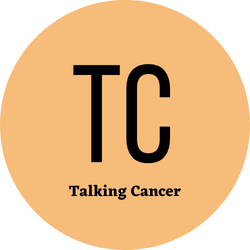Acupuncture vs. Dry Needling: What’s the Difference?
by siteadmin

Acupuncture vs. Dry Needling: What's the Difference?
Introduction
Acupuncture and dry needling are two procedures that are often used by practitioners in the medical field to treat pain and improve health. Both of these treatments involve the insertion of needles into the skin, but the similarities end there. Acupuncture and dry needling are two distinct treatments that have different goals and applications. In this article, we will explore the differences between acupuncture and dry needling.
What is Acupuncture?
Acupuncture is an ancient Chinese practice that has been used for more than 5,000 years to treat a variety of health issues. It is based on the idea that there are pathways of energy, called meridians, that run throughout the body. Acupuncture is used to stimulate these pathways and unblock any blockages that may be causing physical ailments. During an acupuncture session, thin needles are inserted into specific points on the body. These points are believed to correspond to the pathways of energy, and the needles are said to help restore balance to the body. Acupuncture is typically used to treat pain, but it can also be used to treat a variety of other conditions, such as allergies, fertility issues, and digestive disorders.
What is Dry Needling?
Dry needling is a modern medical technique that involves the insertion of needles into the skin to treat muscular pain. Unlike acupuncture, dry needling does not use the pathways of energy as a basis for treatment. Instead, it is based on the idea that tight, knotted muscles can cause pain and dysfunction in the body. During a dry needling session, thin needles are inserted into the tight muscles. The needles cause a brief spasm in the muscle, which releases the tension and helps to improve mobility. Dry needling is typically used to treat muscular pain, but it can also be used to treat other conditions, such as tendonitis and carpal tunnel syndrome.
The Differences Between Acupuncture and Dry Needling
The main difference between acupuncture and dry needling is the underlying theory. Acupuncture is based on the idea of pathways of energy, while dry needling is based on the idea of tight, knotted muscles. Another difference between the two treatments is the type of needles used. Acupuncture needles are usually thinner and longer than dry needling needles, and they are not as deep. Dry needling needles are thicker and shorter, and they are inserted deeper into the skin. The final difference between the two treatments is the purpose. Acupuncture is used to treat a variety of health conditions, while dry needling is typically used to treat muscular pain and other musculoskeletal issues.
Conclusion
Acupuncture and dry needling are two distinct treatments that have different goals and applications. Acupuncture is an ancient Chinese practice that is based on the idea of pathways of energy, while dry needling is a modern medical technique that is based on the idea of tight, knotted muscles. Acupuncture is used to treat a variety of health conditions, while dry needling is typically used to treat muscular pain and other musculoskeletal issues. It is important to note that both treatments have their own benefits and risks, and it is important to consult with a medical professional before deciding which treatment is right for you.
physical therapy clinics Winnfield
Winnfield rehabilitation center
Winnfield Physical Therapy Treatments
Acupuncture vs. Dry Needling: What's the Difference? Introduction Acupuncture and dry needling are two procedures that are often used by practitioners in the medical field to treat pain and improve health. Both of these treatments involve the insertion of needles into the skin, but the similarities end there. Acupuncture and dry needling are two distinct…
Recent Posts
- A Stronger, More Comfortable, More Stable Walking Aid: Groundbreaking Features of the StrongArm Comfort Cane
- Sons of Monaco Painting Unveils the Ultimate Solution: Roll vs. Spray for Exterior Paint
- A Stronger, More Comfortable, More Stable Walking Aid: Groundbreaking Features of the StrongArm Comfort Cane
- Exploring Integrative Medicine and Alternative Therapies: Enhancing Health and Fitness Holistically
- Embracing Patient-Centered Care Models: Revolutionizing Health and Fitness
